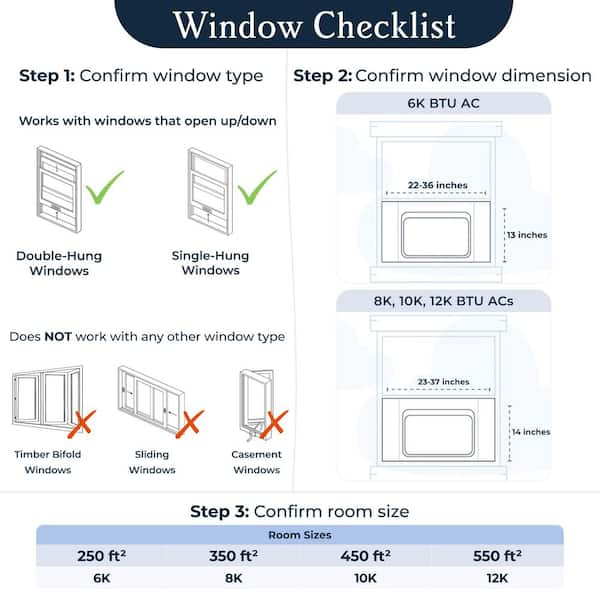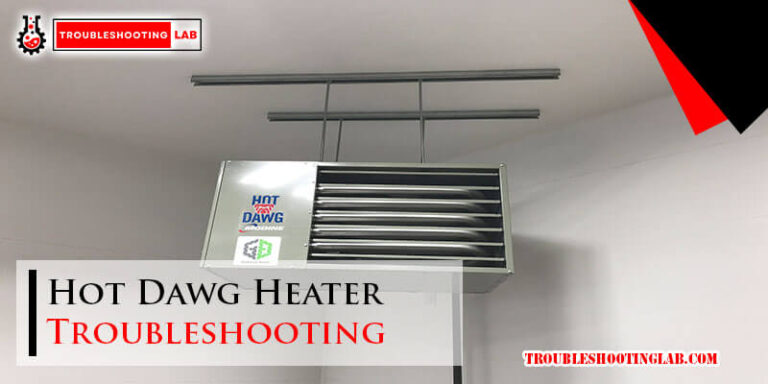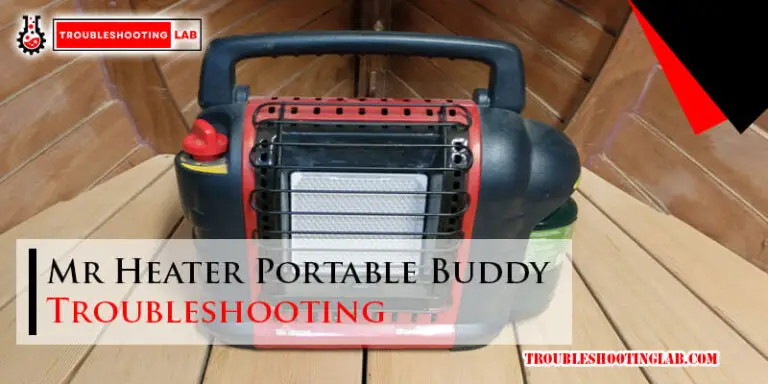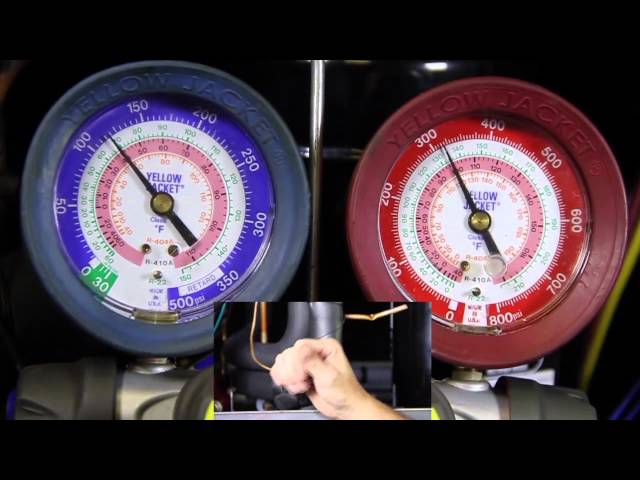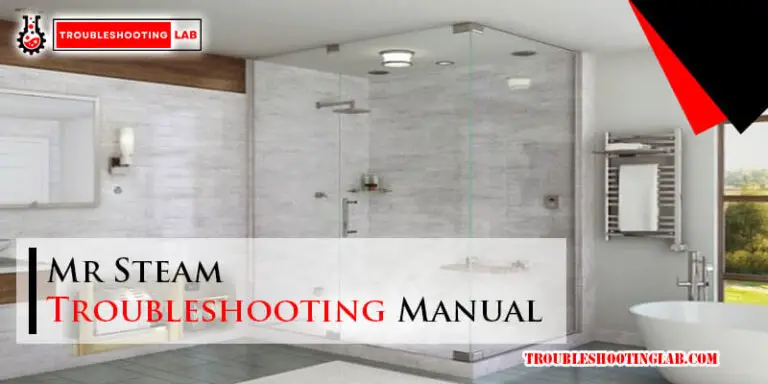Master Mh-140T-Kfa Troubleshooting: Quick Fixes Guide
Is your Master MH-140T-KFA heater giving you trouble? Dealing with a malfunctioning heater, especially when you need it most, can be incredibly frustrating.
But don’t worry—you’re not alone, and you’re in the right place. This guide will help you troubleshoot common issues step by step, so you can get your heater back up and running quickly. Whether it’s failing to ignite, making strange noises, or simply not heating as it should, we’ll break everything down in simple terms.
No confusing jargon, no complicated fixes—just practical solutions you can follow with confidence. Stick around, because by the end of this post, you’ll feel empowered to handle your heater like a pro. Let’s get started!
Common Issues With Mh-140t-kfa
The MH-140T-KFA heater is known for its reliable performance. Yet, like any equipment, it may face occasional issues. Understanding these common problems can help you fix them efficiently. Below, we explore some frequent issues and their possible causes.
Heater Not Igniting
A common issue is the heater failing to ignite. This might result from a clogged nozzle or low fuel levels. Ensure the fuel tank is filled and check for blockages. Also, inspect the spark plug for wear or damage. Replacing faulty parts can often solve the problem.
Unusual Noise During Operation
Strange noises during operation may indicate loose components. Check for loose screws or bolts around the unit. Dirt buildup in the fan assembly can also cause noise. Clean the fan and surrounding areas to maintain smooth operation. If the noise persists, inspect the motor for wear.
Insufficient Heat Output
If the heater isn’t producing enough heat, the air filter might be clogged. Clean or replace the air filter to restore airflow. Low fuel pressure can also lead to reduced heat output. Check the fuel pump and ensure it’s functioning properly.
Unit Shuts Down Unexpectedly
An unexpected shutdown often points to overheating. Inspect the thermostat and ensure it’s working correctly. Blocked air vents may restrict airflow, causing the unit to overheat. Clear any obstructions to allow proper ventilation. Additionally, verify the fuel quality and refill if needed.
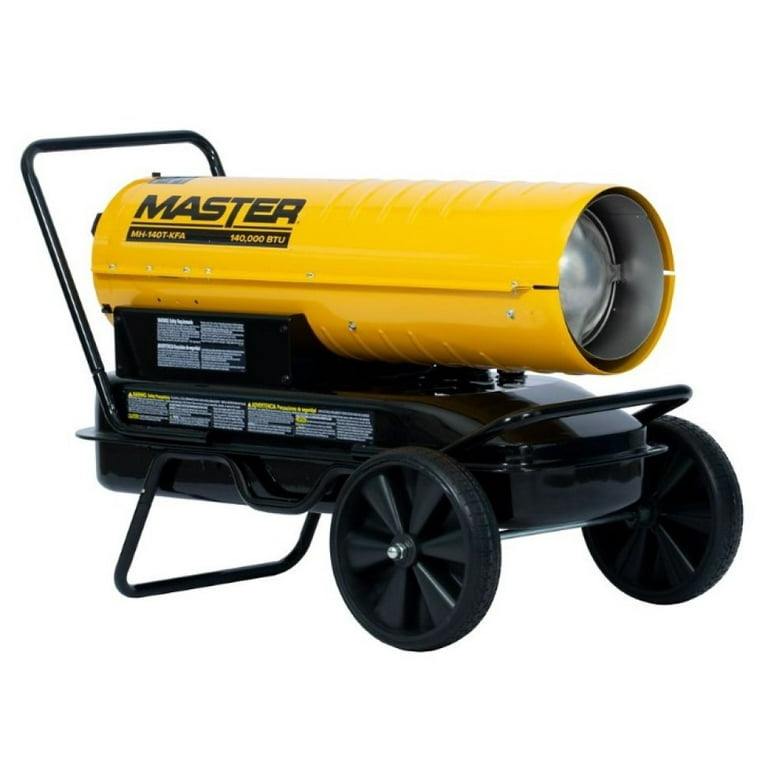
Credit: www.walmart.com
Inspecting The Fuel System
If your Master MH-140T-KFA heater isn’t working as expected, the fuel system is often a good place to start troubleshooting. A well-maintained fuel system ensures proper heating performance and prevents long-term damage. Let’s break down the key steps to inspect and restore your fuel system effectively.
Checking Fuel Quality
Your heater’s performance heavily depends on the quality of fuel you’re using. Low-quality or contaminated fuel can clog components and affect combustion. Start by ensuring the fuel is clean and free of debris.
Pour a small amount of fuel into a transparent container and check for sediment or water separation. If you notice impurities, replace the fuel entirely. Using fresh, high-grade fuel can make a significant difference in how your heater operates.
Ask yourself: when was the last time you checked your fuel’s condition? A quick inspection could save you hours of troubleshooting later.
Inspecting The Fuel Filter
The fuel filter acts as the barrier between your heater and contaminants. Over time, it can get clogged, leading to restricted fuel flow. Carefully remove the filter for inspection.
Check for dirt, discoloration, or blockages. If the filter looks worn out or clogged, replace it with a new one. Filters are inexpensive but vital for smooth operation.
Don’t skip this step. A blocked filter is a common culprit for heaters failing to ignite properly. Think of it as your heater’s first line of defense!
Cleaning The Fuel Nozzle
The fuel nozzle sprays fuel into the combustion chamber, and even minor clogging can disrupt this process. Use a soft brush or compressed air to clean the nozzle thoroughly.
If you spot residue or buildup, gently remove it without damaging the nozzle. Ensure the nozzle is fully clear before reattaching it to the heater.
Take your time here. A clean nozzle ensures consistent spraying, which leads to better combustion and reliable heating. Have you cleaned your nozzle recently? It’s easier than you think.
Inspecting the fuel system is a straightforward process but requires attention to detail. Each step builds on the last to ensure your Master MH-140T-KFA performs as it should. Are you ready to roll up your sleeves and get your heater back on track?
Electrical Component Checks
The Master MH-140T-KFA is a reliable heater, but like any machine, it may occasionally face issues. Electrical problems are often at the root of troubleshooting challenges. By inspecting the electrical components step by step, you can quickly identify and solve the issue, saving time and avoiding unnecessary frustration.
Testing The Power Supply
The first step in electrical troubleshooting is to check the power supply. Is the heater plugged into a working outlet? Use a voltage tester or multimeter to confirm the outlet is delivering the required power.
If the power supply seems fine, inspect the cord for damage. Cracks, frays, or loose connections in the cord can interrupt power flow. Replacing a damaged cord is usually an easy fix.
Always ensure your power source matches the heater’s requirements. Using an incorrect voltage can damage internal components. Double-check this before moving forward.
Examining The Circuit Board
Next, take a closer look at the circuit board. Does it show signs of burning, corrosion, or loose connections? These are telltale signs of a malfunction.
Use a flashlight to inspect the board thoroughly. If you spot a burnt resistor or loose wire, the board may need repair or replacement.
Sometimes, a faulty fuse can be the culprit. Check the fuse on the board with a multimeter to see if it has blown. If it has, replace it with one of the same type and rating.
Inspecting The Ignition System
The ignition system is critical for proper heater operation. Start by checking the spark plug. Is it clean and free of carbon buildup? A dirty spark plug can prevent ignition.
Look at the spark plug cable for cracks or wear. A damaged cable can interrupt the electrical signal needed for ignition. Replace it if necessary.
Finally, test the ignitor module. If it doesn’t produce a strong spark, it may need to be replaced. A weak or absent spark is a clear sign the ignition system isn’t functioning as it should.
By systematically checking these components, you can often pinpoint and resolve the issue. Which part of your heater’s electrical system has given you trouble in the past? Share your experience in the comments!

Credit: www.youtube.com
Airflow And Ventilation Issues
Airflow and ventilation problems are common culprits when your Master MH-140T-KFA heater isn’t performing its best. Poor airflow can lead to uneven heating, strange noises, or even complete shutdown. If your heater seems off, focusing on its airflow components might save you time and frustration.
Cleaning The Air Intake
The air intake is like your heater’s lungs. If it’s clogged, the unit struggles to “breathe” and work efficiently. Dust, dirt, and debris can easily accumulate on the air intake over time, especially if you’re using the heater in dusty environments like garages or workshops.
Start by turning off the heater and unplugging it for safety. Use a soft brush or compressed air to clean any visible debris from the air intake. If you notice stubborn buildup, a damp cloth can help, but ensure everything is completely dry before restarting the unit.
Neglecting this step could lead to overheating or poor performance. When was the last time you checked your air intake? If it’s been a while, it might explain your heater’s issues.
Examining The Fan Blades
Fan blades play a critical role in maintaining proper airflow. If they’re damaged or dirty, your heater won’t distribute air effectively, which can lead to uneven heating or even safety risks. A simple inspection can reveal a lot.
Turn off and unplug your heater, then carefully examine the fan blades for dust, cracks, or bending. Use a soft cloth or brush to clean the blades, taking care not to disturb their alignment. If a blade is bent or damaged, consider replacing it to prevent long-term problems.
Even a small issue with the blades can create larger operational problems. Would you rather spend a few minutes inspecting them or deal with a costly repair later?
Ensuring Proper Ventilation
Your heater needs space to function safely and efficiently. Blocking the vents or placing the heater in cramped spaces can cause overheating and disrupt airflow. This not only affects performance but can also become a fire hazard.
Make sure there’s at least three feet of clearance around the heater, especially near the vents. Avoid placing it near walls, furniture, or other obstructions. If you’re using the heater in a small room, consider opening a door or window to improve ventilation.
Think about the setup of your heater right now. Is it in a location where it can “breathe” freely? A quick adjustment could make all the difference.
Tackling these airflow and ventilation issues can keep your Master MH-140T-KFA running smoothly and safely. Regular maintenance takes only a few minutes but ensures your heater stays reliable when you need it most.
Thermostat And Sensor Problems
If your Master MH-140T-KFA heater isn’t working as it should, the thermostat and sensors might be the culprits. These components are vital for regulating heat and ensuring the heater operates efficiently. When they malfunction, your heater might fail to start, stop suddenly, or even overheat.
Calibrating The Thermostat
Is your heater acting like it has a mind of its own, turning off too soon or not heating enough? Chances are, the thermostat needs calibration. Start by checking the current temperature settings on the thermostat. Are they aligned with your desired room temperature?
Adjust the thermostat using the manual provided by Master MH-140T-KFA. If you no longer have it, most settings can be easily tweaked by turning the dial or pressing the buttons. Keep testing until the heater responds correctly.
Calibration is simple but requires patience. You might need to test the heater multiple times to get the settings just right. Don’t rush—small adjustments often make a big difference.
Checking The Flame Sensor
The flame sensor is the silent guardian of your heater. If it’s dirty or damaged, your heater might shut off unexpectedly or fail to ignite. To check it, you’ll need to remove the sensor carefully. Look for soot or residue buildup.
Clean the sensor gently using a soft cloth or fine sandpaper. Avoid being too rough—it’s a sensitive piece of equipment. Once cleaned, reinstall the sensor and test your heater again.
If cleaning doesn’t solve the problem, the sensor might be faulty. At this point, you should consider replacing it to avoid further issues.
Replacing Faulty Sensors
Sometimes, cleaning or recalibrating isn’t enough. Faulty sensors can cause persistent problems. Replacing them is often the quickest solution. To do this, first confirm the exact model and type of sensor your heater uses.
You can find replacement sensors online or at your local hardware store. Once you have the right part, follow the instructions carefully to install it. Double-check connections to ensure everything is secure.
A new sensor can restore your heater’s performance instantly. Think of it as giving your heater a fresh start. Isn’t it worth the effort to finally enjoy a warm, cozy space again?
Have you ever tried fixing your thermostat or sensor issues before? What’s been your biggest challenge? Share your thoughts below—it might just help someone else troubleshoot their heater!
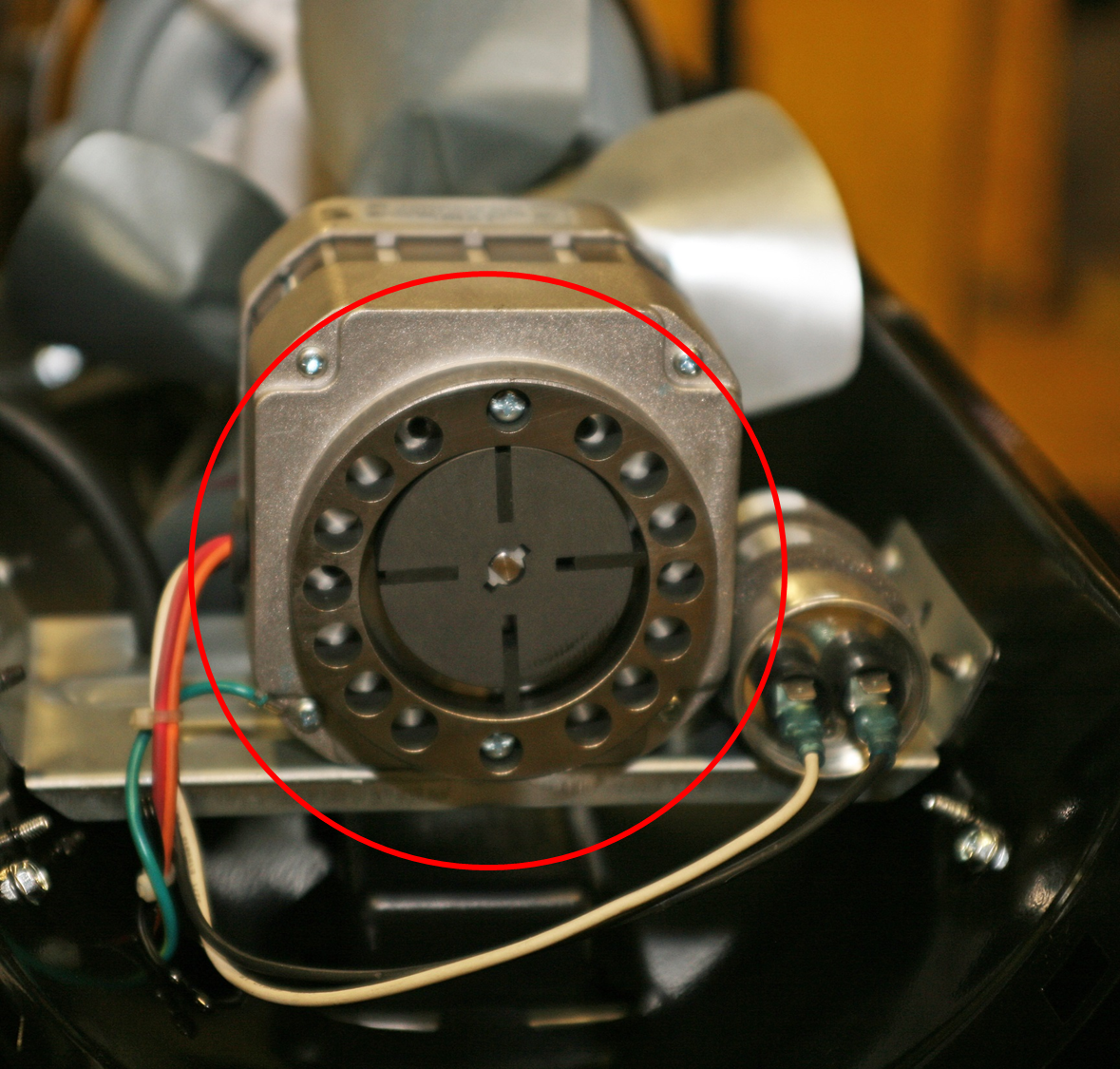
Credit: www.mitm.com
Preventative Maintenance Tips
The Master MH-140T-KFA is a reliable heater, but like any machine, it performs best when you take care of it. Preventative maintenance can save you from unexpected breakdowns and costly repairs. Let’s look at a few practical tips to keep your unit running efficiently for years to come.
Regular Cleaning Routines
A clean heater is a happy heater. Dust and debris can clog the filters and vents, leading to poor performance or even overheating. Make it a habit to clean the air intake and exhaust areas after every use.
Use a soft brush or compressed air to remove dirt from the fan blades and motor housing. Don’t forget to wipe down the exterior with a damp cloth. A clean surface prevents rust and corrosion.
Check the fuel tank for any sediment buildup. If you notice gunk at the bottom, drain and clean it before refilling. This small step can prevent clogs in the fuel line and improve combustion efficiency.
Storing The Unit Properly
How you store your MH-140T-KFA during the off-season matters. Leaving it in a damp environment can lead to rust, while improper handling could damage internal components. Choose a dry, well-ventilated space for storage.
Drain the fuel tank before storing the unit. Old fuel can degrade over time and cause starting issues later. Seal the tank to prevent moisture from getting inside.
Cover the heater with a dustproof material to keep it clean and safe from accidental bumps. You’ll thank yourself when it’s time to use it again, and it’s ready to go without a hitch.
Scheduling Periodic Inspections
Even if everything seems fine, don’t skip regular checkups. Think of inspections as giving your heater a health check. Small issues caught early can save you from big headaches down the line.
Inspect the ignition system, fuel lines, and fan motor at least once a season. Look for wear and tear, loose connections, or unusual noises when the unit is running. If you’re unsure, consult the user manual for guidance.
Set a reminder to check the air filters every few months. Dirty filters can restrict airflow and reduce efficiency. Replace them if they look worn out—it’s a simple fix with a big impact.
What’s your current maintenance routine for the MH-140T-KFA? Are there steps you’ve been skipping that could make a difference? Start small, and you’ll see how these preventative tips can keep your heater in top shape.
When To Seek Professional Help
Sometimes troubleshooting your Master MH-140T-KFA heater can feel like solving a puzzle blindfolded. While many issues can be fixed with basic maintenance, certain problems may require a professional touch. Knowing when to step back and call an expert can save you time, money, and frustration.
Identifying Complex Issues
Not all problems are easy to pinpoint. If your heater isn’t running despite checking fuel levels, filters, and wiring, it could involve deeper electrical or mechanical failures. Issues like a malfunctioning circuit board or a damaged motor can be tricky to diagnose without proper tools.
Ask yourself this: Are you equipped to handle advanced repairs safely? If the answer is no, it’s probably time to contact a technician. A misstep in handling intricate components could worsen the issue or void your warranty.
Warranty Considerations
Before attempting any major fix, check your heater’s warranty details. Many warranties specify that only authorized technicians can perform repairs without voiding coverage. You don’t want to lose protection over an attempt to save a few bucks.
If your heater is still under warranty, call the manufacturer or authorized service center. They’ll guide you on what steps to take. Skipping this could lead to unexpected expenses down the line.
Choosing A Trusted Technician
Not all repair services are created equal. Look for professionals who specialize in Master heaters. Reviews and recommendations can be a good starting point. Local repair shops may offer quick service, but ensure they have experience with your model.
Ask detailed questions before hiring. What’s their turnaround time? Do they provide a warranty for their repairs? Trusting your heater to an expert ensures the job is done right the first time.
So, the next time your MH-140T-KFA acts up and you feel overwhelmed, remember: you don’t have to go it alone. Knowing when to call a pro can make all the difference between a quick fix and a costly headache.
Conclusion
Troubleshooting the Master MH-140T-KFA can save you time and frustration. Understanding common issues helps you fix problems quickly and effectively. Always follow safety guidelines when working on the unit. Regular maintenance can prevent many common failures over time. If problems persist, consult the user manual or seek professional help.
A well-functioning heater ensures warmth and comfort in cold conditions. Keep these tips handy for easy reference during future troubleshooting. With the right approach, your heater will run smoothly for years to come. Stay proactive, and your heating needs will always be met.

